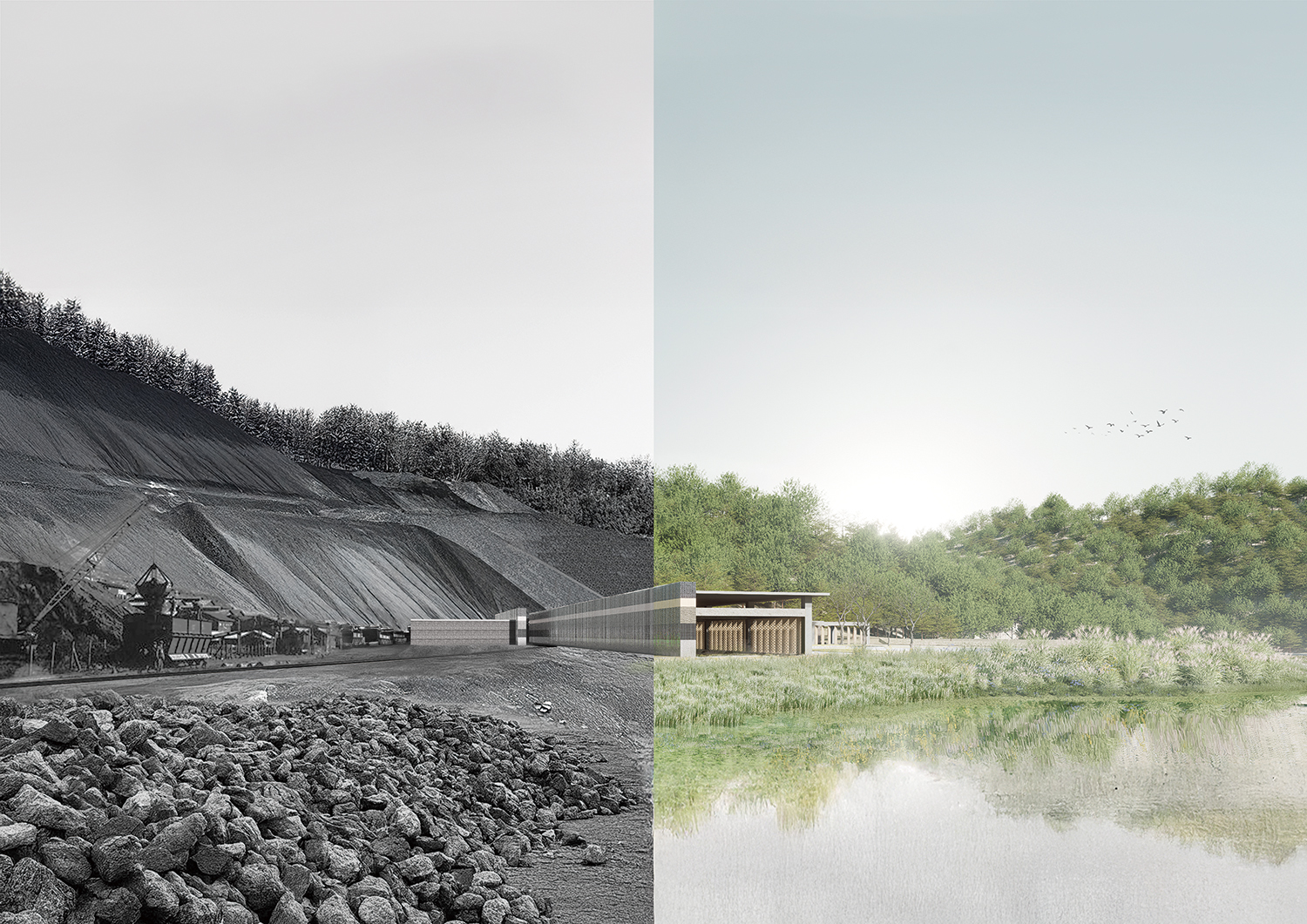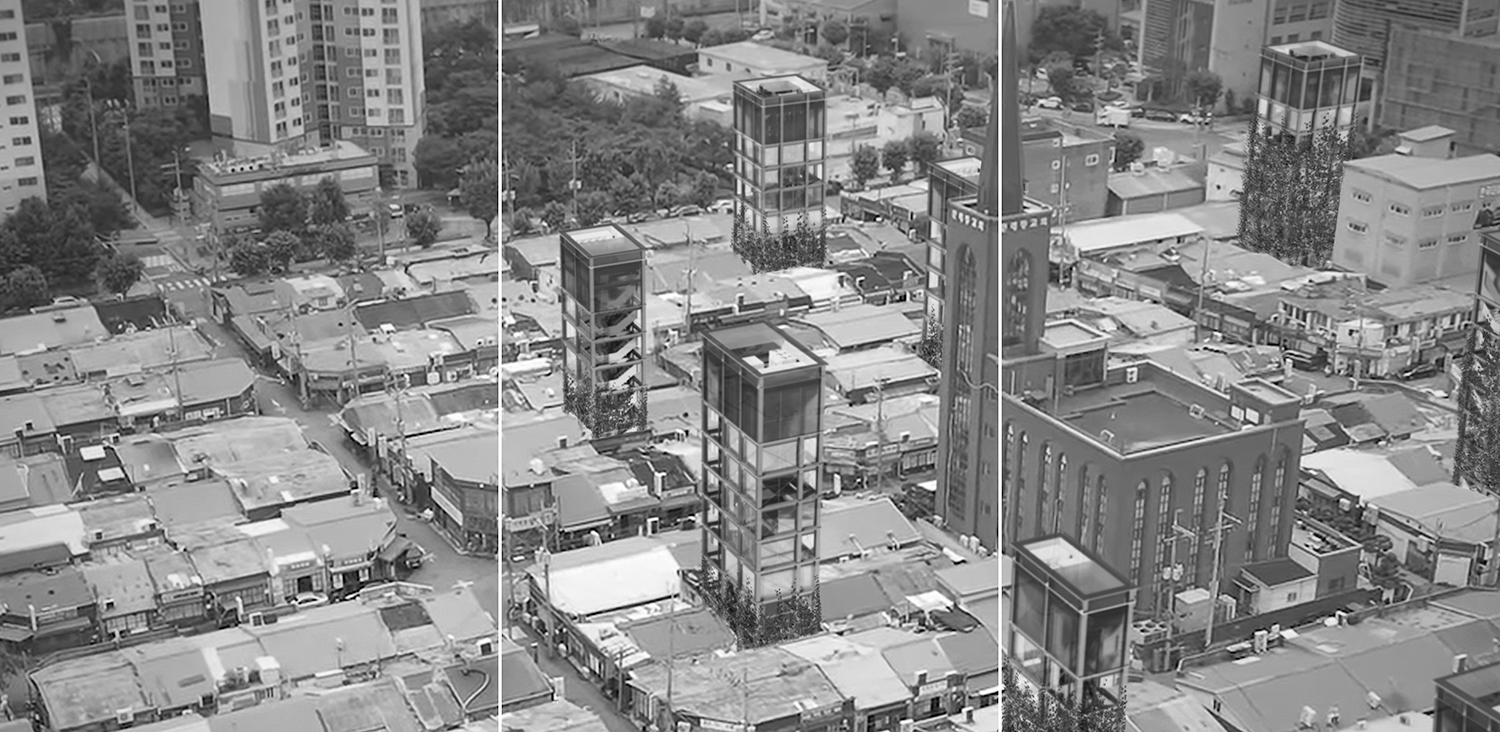SPACE November 2025 (No. 696)

The Grand Prize winning proposal ‘De-Construction To Re-Define’ ©Lim Sebin, Oh Hyerin, Ko Seoyeon

The Prize of Excellence winning proposal ‘Erecting the Axis of Time’ ©Baek Seungjae, Shin Sunghyun
On Sep. 19, the second round of judging and the award ceremony for the 38th Space Prize for International Students of Architecture Design were held at the SPACE Group headquarters. This year’s jury – Kang Yerin (professor, Seoul National University) and Lee Chihoon (partner, SoA) – proposed the theme ‘Fluid Boundaries: Negotiating Internal and External Discourses of Architecture’. The theme sought to explore how architecture might be understood today, when there is no single discourse accepted as absolute and the architect’s social role and professional boundaries are constantly changing. Participants were asked to reflect on the question, ‘As an architect, what do I value?’ and, with clear reasoning, select an actual, physical site – not an imaginary one – to ground their project.
The Grand Prize went to Lim Sebin, Oh Hyerin, and Ko Seoyeon (Inha University). Their proposal began with a simple but challenging question: rather than focusing on creating new spaces, how might architects bring meaning to spaces that have been abandoned or have reached the end of their use? Their project, ‘De-Construction To Re-Define’, centres on the Jangseong Mining Station in Taebaek, Gangwon-do, which was shut down in June 2024. As the mine had closed only recently, discussions on the site’s new future were already active, yet the real issue lay in the thousands of tons of heavy-metal-contaminated waste rock left behind by the mining industry. The team noticed that this same waste rock could also serve as material for zeolite, a mineral known for its exceptional adsorption and filtration properties used in water purification. Based on this observation, they proposed a purification system that could turn the site’s own remnants into a means of ecological restoration. The jury commended the project for expanding the role of the architect beyond construction itself, and for transforming the traces of destruction into tools for recovery—recasting social and ecological issues in architectural terms with a persuasive clarity.
The Prize of Excellence was awarded to Baek Seungjae and Shin Sunghyun (Inha University), who defined temporality – the capacity to connect past and future generations, and one society to another – as a core essence of architecture. They drew a parallel between this quality and a large language model (LLM) artificial intelligence, which produces answers by learning from accumulated data of the past. Their project, ‘Erecting the Axis of Time’, focuses on the manufacturing ecosystem of Mullae-dong 4-ga, where local industry faces immediate challenges such as poor working and resting conditions, as well as longer-term challenges like the aging of master craftsmen and the lack of successors. The team proposed demolishing a central building block to construct a tower that combines a local data centre with new workspaces, improving lighting, ventilation, and basic facilities such as restrooms and showers. The lower floors include green zones to resolve the poor lighting and ventilation of the existing site, while the upper floors house essential facilities that were previously absent—restrooms, showers, and other basic infrastructure. The tower’s data centre would be used to develop ‘Craftman AI’, an artificial intelligence trained on the accumulated knowledge of local artisans, enabling the spirit of Mullae’s craftsmanship to be carried into the future. The jury noted that questions remained – such as ‘Why is temporality important in architecture?’ and ‘In this plan, is the architect’s role to programme the Craftman AI?’ – and yet they regarded the project as a meaningful attempt to reflect on how architects might renew their professional and discursive positions in the age of artificial intelligence.





